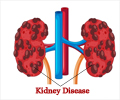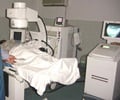Researchers are zeroing in on the genetic abnormalities predisposing to vesicoureteric reflux (VUR), one of the most common causes of urinary tract infections and kidney failure in
Researchers are zeroing in on the genetic abnormalities predisposing to vesicoureteric reflux (VUR), one of the most common causes of urinary tract infections and kidney failure in children, reports a study in an upcoming issue of the Journal of the American Society of Nephrology (JASN). "In this study, we accomplished a very critical step towards the identification of the VUR gene," says Ali G. Gharavi, MD (Columbia University, New York).
Led by Patricia L. Weng, MD (Mount Sinai School of Medicine), and Simone Sann-Cherchi, MD (Columbia University), the researchers, including Gharavi, performed genetic studies in 16 large families affected by VUR. "In VUR, a faulty valve in the bladder allows urine to flow back, or 'reflux,' up to the kidneys," Gharavi explains. If VUR persists, it can lead to repeated urinary tract infections and kidney failure. It affects about one percent of children and runs in families.A method called linkage analysis was used to pinpoint the location of the abnormal genes associated with VUR. "We narrowed down the location of the VUR susceptibility gene to a region on chromosome 12 that is less than one percent of the entire genome," says Gharavi.
In contrast to previous studies, the VUR susceptibility gene appeared to be inherited in autosomal recessive fashion-affected children inherit one copy of the faulty gene from each parent. According to Gharavi, "This means that there are many different inherited forms of VUR, some with dominant and some with recessive inheritance."
The next step will be conducting studies to identify the exact gene predisposing to VUR. "We plan to study more families and other patients with VUR so that we can better understand how the kidney and urinary tract develop and then create better diagnostic tests and treatments," Gharavi adds.
Although the study does not identify the gene causing VUR, it represents the initial, critical step towards achieving that goal. The study was limited to a specific group of Caucasian patients; more research will be needed to determine whether the results apply to other populations and ethnicities.
The authors reported no financial disclosures. The research was supported by the National Institute of Diabetes and Digestive and Kidney Diseases, the National Kidney Foundation, and the Telethon Institute.
Advertisement
Source-Newswise
SRM













